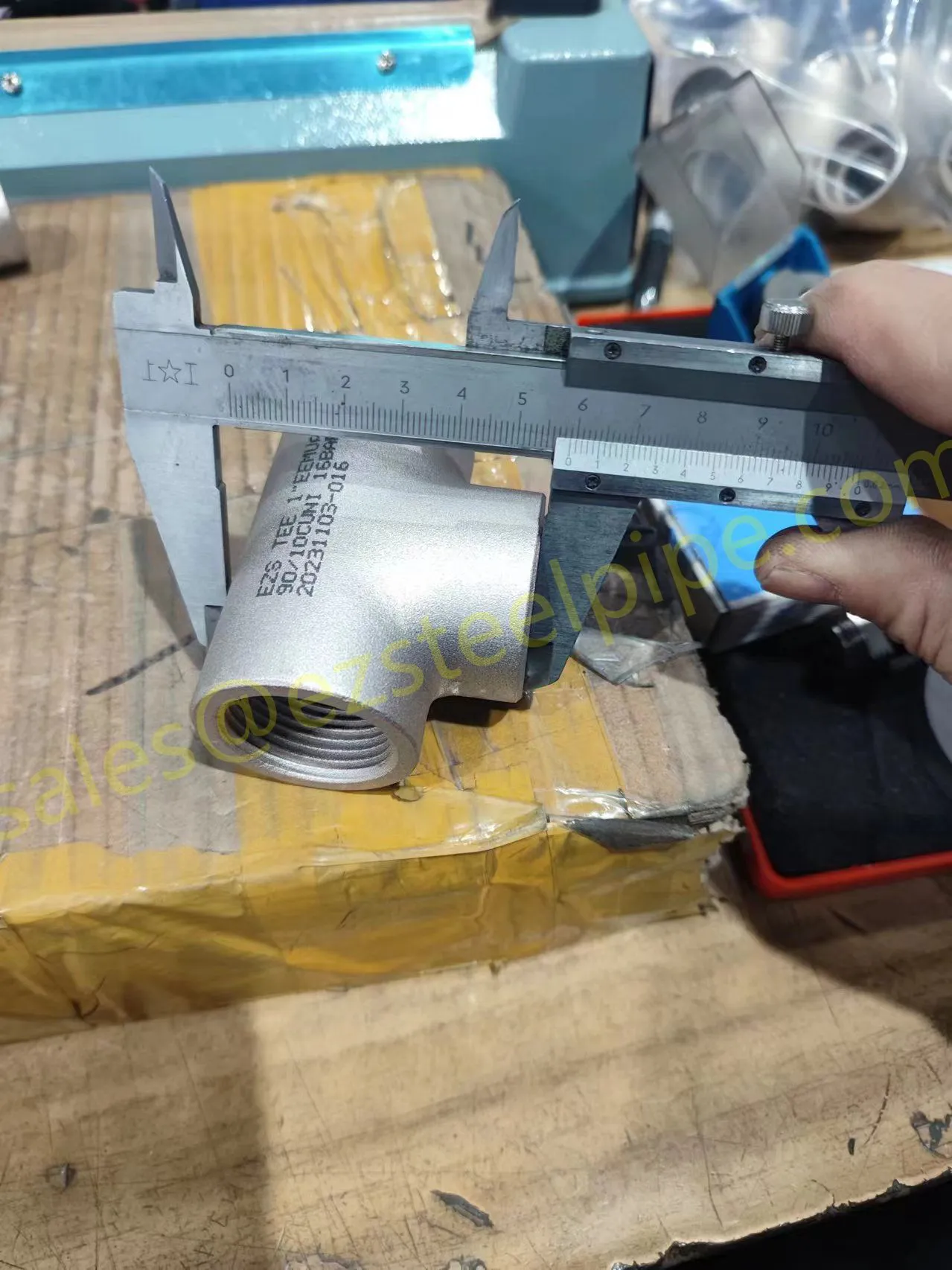 export@ezsteelpipe.com
export@ezsteelpipe.com +86 731 8870 6116
+86 731 8870 6116
Threaded pipe fittings are among the most widely used connection methods in low-to-medium pressure piping systems.


Threaded pipe fittings are among the most widely used connection methods in low-to-medium pressure piping systems. They feature tapered (NPT) or parallel (BSP) threads that allow pipes to be screwed together without welding. Below is a detailed introduction covering standards, sizes, assembly differences, and key comparisons with SW/BW fittings.
a) ASME/ANSI Standards (USA & International)
- ASME B1.20.1: Defines NPT (National Pipe Tapered Thread) dimensions.
- ASME B16.11: Covers forged threaded fittings (similar to socket-weld).
- MSS SP-42: Stainless steel threaded/bonded fittings.
- ASTM A105/A182: Material standards for carbon/stainless steel.
b) BSP Standards (Europe/Asia)
- ISO 7-1 (BSPT): British Standard Pipe Tapered Thread (similar to NPT but different angle).
- ISO 228-1 (BSPP): British Standard Pipe Parallel Thread (requires sealant/O-ring).
c) JIS (Japanese Standard)
- JIS B0203: Metric tapered threads (PT).
- JIS B2306: Threaded steel pipe fittings.
| Fitting Type | Common Size Range (NPS) | Max. Typical Size |
| Threaded Elbow | ⅛" to 12" | 12" (limited beyond) |
| Threaded Tee | ⅛" to 12" | 12" |
| Threaded Coupling | ⅛" to 12" | 12" |
| Threaded Reducer | ⅛" to 12" | 12" |
| Threaded Cap | ⅛" to 12" | 12" |
| Threaded Union | ⅛" to 4" | 4" (larger = impractical) |
Notes:
- Most common sizes: ½" to 4" (NPT/BSP).
- NPS > 4" is possible but rare due to sealing challenges.
- BSP fittings are common in Europe/Australia, while NPT dominates in the USA.
| Thread Type | Description | Sealing Method |
| NPT (Tapered) | Tapered thread (1.79° angle) | Thread sealant (Teflon tape, pipe dope) |
| BSPT (Tapered) | British Standard (1.47° angle) | Thread sealant |
| BSPP (Parallel) | Straight thread (G-series) | O-ring/gasket required |
| SAE Straight | Used in hydraulics | Metal-to-metal sealing |
Key Differences:
- NPT vs. BSPT: NPT has a steeper taper; they are not interchangeable.
- BSPP (G-thread) requires a washer/O-ring (common in hydraulics).
a) Installation Steps
1. Inspect threads for damage.
2. Apply sealant (Teflon tape for NPT/BSPT, Loctite for high-pressure).
3. Hand-tighten first, then use a wrench (1-2 turns past hand-tight).
4. Avoid over-tightening (can crack fittings).
b) Disassembly
- Threaded fittings can be unscrewed for maintenance (unlike SW/BW).
- Re-sealing may be needed upon reassembly.
| Feature | Threaded | Socket-Weld (SW) | Butt-Weld (BW) |
| Connection Type | Screwed (NPT/BSP) | Pipe inserted & fillet-welded | Pipe butted & fully welded |
| Pressure Rating | Low-Medium (≤3000 PSI) | High (Up to 9000) | Very High (Unlimited) |
| Leak Resistance | Moderate (sealant needed) | High (welded) | Best (full penetration) |
| Size Range | ⅛" – 12" | ⅛" – 4" | ½" – 48"+ |
| Installation Speed | Fastest (no welding) | Moderate (welding) | Slowest (precision welding) |
| Disassembly | Easy (reusable) | Difficult (cutting) | Permanent (cutting) |
| Cost | Lowest | Medium | Highest |
✔ Low/Medium Pressure Systems (Water, air, gas).
✔ Plumbing & HVAC (Easy installation).
✔ Maintenance-Friendly Systems (Frequent disassembly needed).
✔ Hydraulic Lines (BSPP/SAE).
Avoid For:
❌ High-pressure steam/oil/gas (risk of leaks).
❌ Vibration-heavy systems (can loosen over time).
❌ Corrosive fluids (unless using stainless steel).
Pros:
- Quick installation (no welding required).
- Reusable & adjustable.
- Cost-effective for small systems.
Cons:
- Not leak-proof under high pressure/vibration.
- Threads can corrode/strip over time.
- Limited to smaller pipes (NPS > 4" is rare).
Conclusion
- Threaded fittings are ideal for low-cost, easy-installation systems where welding is impractical.
- NPT (USA) and BSP (Europe/Asia) are the dominant standards.
- Best for: Water lines, compressed air, hydraulics (BSPP), and maintenance-heavy systems.
- Not recommended for: High-pressure, high-temperature, or corrosive services.
Want to order the same ? Contact us Now to send your request!

 Related Products
Related Products